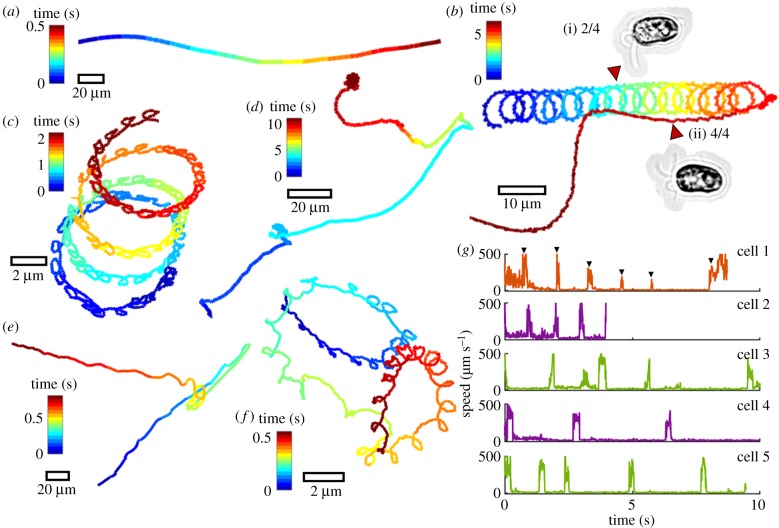Figure 2.
Active gait reconfiguration and heterogeneity in single-cell swimming trajectories. Persistent directional swimming (a) is contrasted with asymmetric and chiral trajectories (b–f). Free-swimming cells of the quadriflagellate Tetraselmis subcordiformis are shown in (b,c). In (b), a cell transitions from a spinning gait of two flagella (i), to a galloping gait of all four flagella (ii). In (c), beating is restricted to only one of four flagella, resulting in a strongly helical trajectory. A different quadriflagellate Pyramimonas parkeae exhibits intermittency: in trajectory (d) a cell alternates between a trot gait of four flagella (active state) and a stop state with no flagella activity (inactive state). In (e), the octoflagellate Pyramimonas octopus undergoes reorientation following a shock response (see also [27]). (f) A P. parkeae cell presenting a single actively beating flagellum. (g) The swimming speed of P. parkeae was measured in a population of individuals, which shows a characteristic activity timescale for ‘bursting’ (electronic supplementary material, videos S1–S3).

